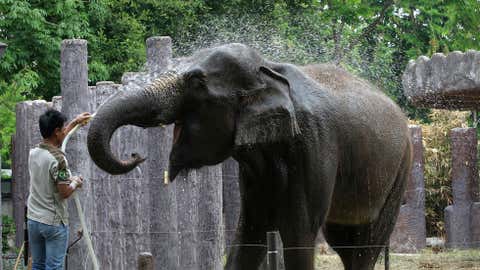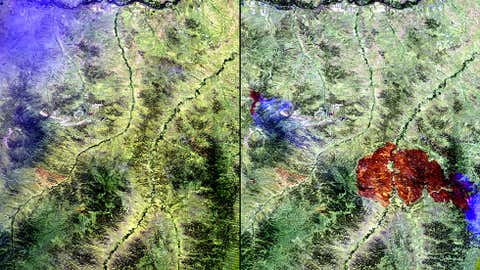
Southeast Asia has been roasting in an extended heat wave through much of April with temperatures reaching unprecedented levels, allowing at least three countries to set new all-time national heat records and several others to come very close.
In Thailand, the heat wave is considered the worst since reliable records have been kept in that country.
"As of now we can say we've broken the record for the highest temperatures over the longest duration in 65 years — and the season isn't over yet," Surapong Sarapa, head of the Thai Meteorological Department's weather forecast division, told the Associated Press. Thailand began keeping national weather records after 1950.
On April 28, Mae Hong Son recorded the hottest temperature on record in Thailand topping out at 112.3 degrees Fahrenheit (44.6 degrees Celcius), according to Christopher Burt, a weather historian with wunderground.com. The previous record was held by Uttaradit which reached 112.1 degrees Fahrenheit (44.5 degrees Celcius) on April 27, 1960.
Burt added that at least 50 towns and cities in Thailand had recorded all-time record highs for their respective locations as of April 19.
The heat wave has also fueled a new record for energy consumption and prompted health warnings on everything from foodborne illness to drowning, both of which rise every April when Thailand's hottest month coincides with school summer break.

Nationwide, energy consumption set a record high on Tuesday at 29,004.6 megawatts, said the Electricity Generating Authority of Thailand. It was the latest in a series of peaks reached earlier this month, and EGAT is urging the public not to keep air conditioners on all day.
"We are asking for public cooperation in conserving energy for one-hour a day from 2 p.m. to 3 p.m. until May 20," the national power utility said in a statement Tuesday.
(MORE: Record Warm March for the Globe)
Several countries surrounding Thailand have also dealt with the searing temperatures.
Cambodia and Laos set new all-time record highs for any day of the year during April, Burt reported. In addition, Malaysia, Singapore, and Vietnam have all come very close to setting new national heat records.
The new all-time record high for Cambodia was set on April 15 when the mercury soared to 108.7 degrees Fahrenheit (42.6 degrees Celcius) in Preah Vihea, beating the previous record set just two days early in Bantey Ampil.
Burt reported that prior to those unprecedented temperatures, the all-time record high in Cambodia was 106.5 degrees Fahrenheit (41.4 degrees Celcius) in 1960. In total, about a half dozen other locations in Cambodia had seen temperatures that exceed that previous national record as of April 19.
The hot weather in Cambodia was blamed for the death of an elephant trained to carry tourists at the famed Angkor Wat temple compound. Local media carried pictures of the pachyderm which collapsed last Friday and quoted the Angkor Elephant company as saying she had apparently died of a heart attack due to high temperatures and lack of wind.
Southeast Asia typically sees warm and dry conditions during El Niño, which is consistent with the extreme heat they've seen. The current El Niño is now fizzling and may transition to La Niña later this year.
(MORE: Rapidly Fizzling El Niño May Become a Strong La Niña This Fall or Winter)
Information from the Associated Press was used in this report.
MORE ON WEATHER.COM: Climate Change From Space




